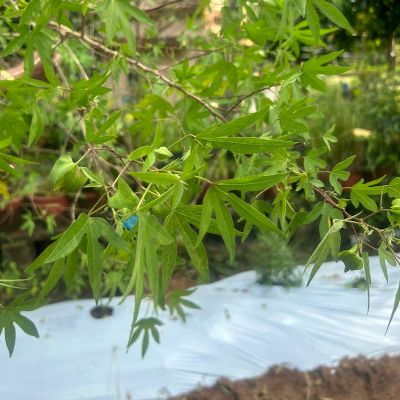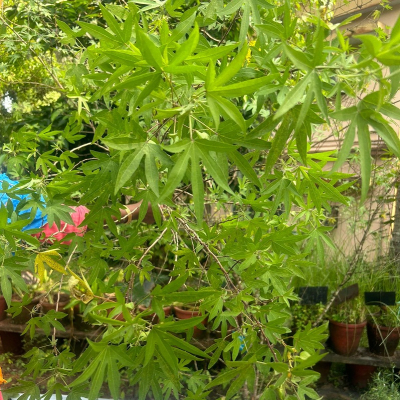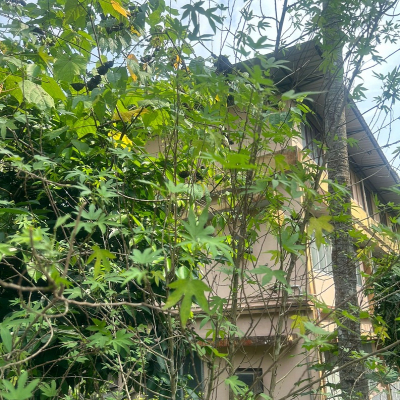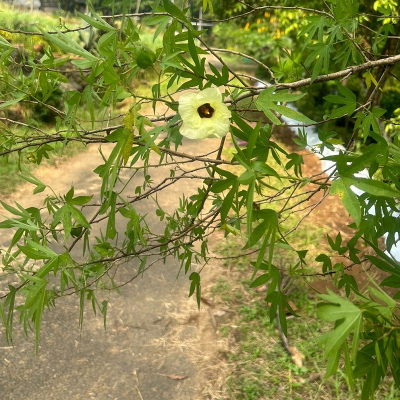Gossypium herbaceum Linn.
Synonyms : G. wightianum
Family : Malvaceae
Group : Anti hypertensive
Parts Used : Whole plant
Vernacular Names :-
| English | : | Common cotton, Indian cotton |
| Malayalam | : | Kurupparutti,Parutti, Nulpparuti, Panjipparutti |
| Hindi | : | Kapas, Ruyi |
| Sanskrit | : | Karpasah |
| Kannada | : | Janivara-hatti-mara |
| Tamil | : | Karpasam, Panju |
| Telungu | : | Pratti |
Distribution and Habitat: Throughout India
Botany: A small shrub, 60cm – 2.5 m in height with rigid sparsely pilose stems and branches.
- Leaves: Simple, alternate, cleft up to half in to 3-7 lobes, lobes broad, ovate, rotund, suddenly acute or apiculate, leathery, gland dotted.
- Flowers: Yellow with purple centre, rarely white, bracteoles with 6-8 serrated teeth on the margin, broadly triangular.
- Fruits: Rounded beaked capsules, 3-4 locular, seeds usually with two coats of hairs, white grey or reddish brown in colour.
Properties: Anti-inflammatory properties
Chemical constituents: Betaine, caproic acids, carotenoids, dihydroxybenzoic acids, formic acids, furfural acids, gossypol, gossypetin, gossyfulvin, gossycaerulin, gossypin, gossypitrin, gossypurpurin, herbacetin, herbacitrin, isoquercetin, leucodelphinidin, pentosans, peptones, phospholipids, phytosterols, phytosteroline, quercetin, quercimeritrin, raffinose.
Uses: It is used in strangury, skin diseases, amenorrhea, dysmenorrhoea, burning sensation of stomach, rheumatoid arthritis, otalgia, hyperdipsia, hallucinations, hypochondria, scabies, gout, cephalalgia, dizziness, agalactia, intermittent fevers
Formulations: Kushthanashakalepa, Madhukadiyogadwayam, Karpasamootradiyoga
Agro technology:
Soil and climate: Climate is tropical with rainfall 500-750 mm. It can be grown in a wide variety of soils.
Propagation: Cotton is mostly propagated by seeds. It can be propagated vegetatively by cuttings.
Manure: Apply Farm yard manure compost 12.5 t/ha for rainfed crop. Apply N: P2O5: K2O each 35 kg/ha as basal dressing.
Irrigation: Irrigate the plants once in two weeks. Copious irrigation during flowering will ensure good pod setting and good fibre quality.
Plant protection: Sucking pests like jassids, aphids, and thrips are attacking the plant. Main diseases are bacterial blight diseases, and Alternaria leaf spots.
Harvesting: The bolls start bursting 100-120 days after sowing and will be ready for harvest at this stage. This crop is usually harvested in 3 or 4 pickings, taken at suitable intervals. Harvesting from half – open or immature bolls yields cotton containing large percentage of immature fibres and trash.




